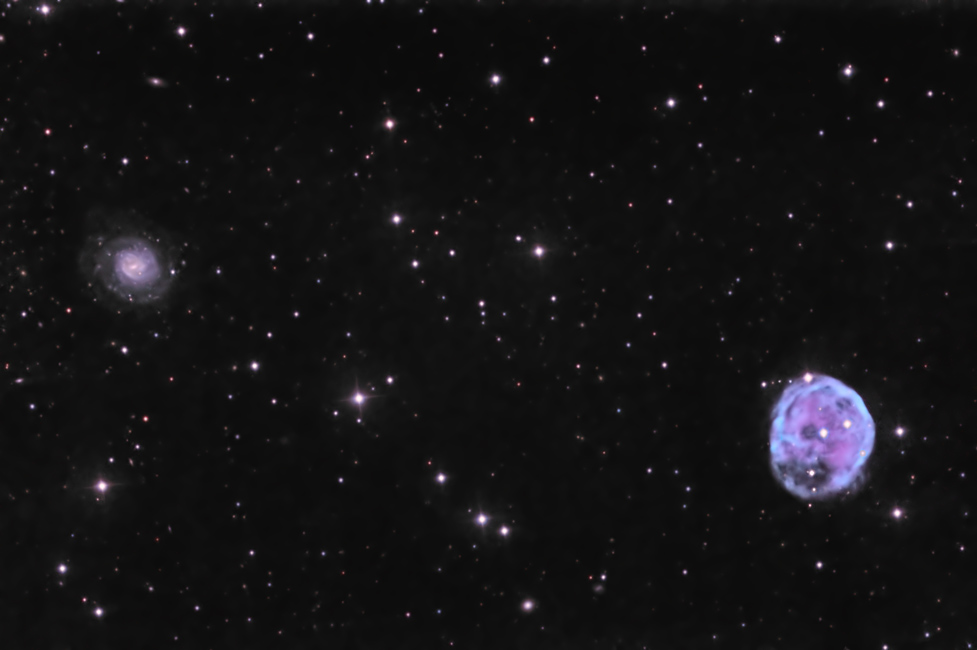

NGC246, the bright blue/purple object on the right side of the image, is a moderate-sized (3.8 arcminutes in diameter), bright (magnitude 8 according to most sources) planetary nebula,
the type of nebula which it is generally thought our Sun will produce as nuclear fusion slows and then dies in its core, and it expels its outer layers of gas. NGC246 is estimated to be about 1600
light years from us, which would make it about 2.5 light years across.
NGC255 (the little spiral galaxy on the left side of the image) is estimated to be about 70 million light years away from us, and 63,000 light years in diameter (compared to our Milky Way's 100,000
light year diameter). It's too far away to get much detail, but I thought it complemented the little planetary nebula nicely, and gives a powerful illustration of perspective--The galaxy is something like
25,000 times as large (in terms of diameter) as the little nebula, but is so far away that it looks to be a bit smaller.
I always love how almost any view of the heavens will show so many background galaxies, and this is no exception. If you examine the highest-resolution version, you can see many tiny galaxies mixed in
among the stars (they're the ones that are either quite oblong or faint and blurry, so generally a galaxy). Of course, these are huge things, tens of thousands of light years across, with billions upon
billions of stars in each one, but they're so far away they barely show at all.
Copyright 2015-2016 Mark de Regt